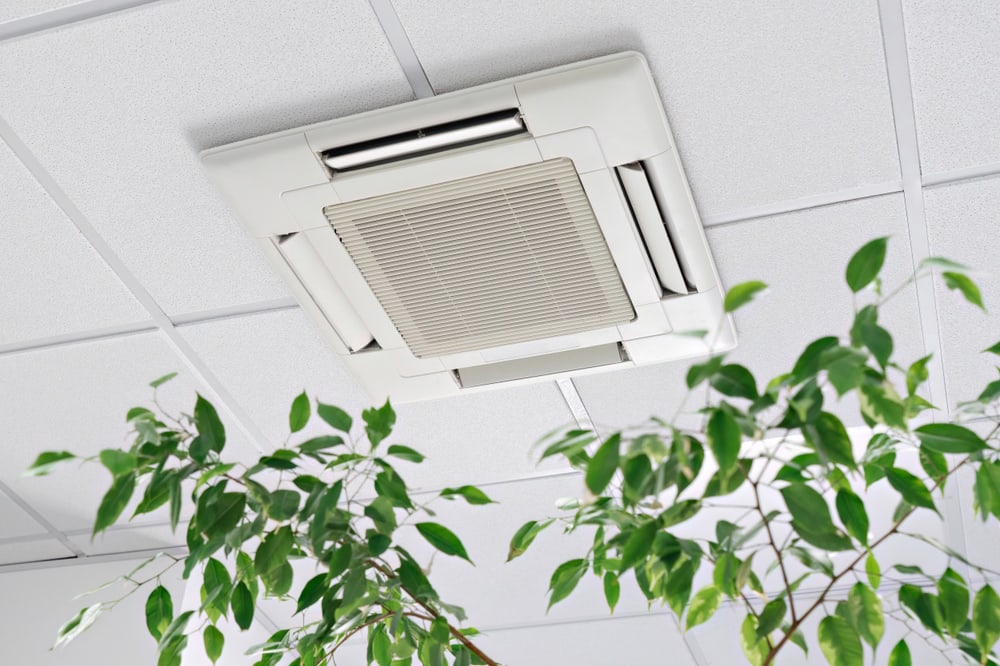Get in touch
Thanks for getting in touch

Indoor Air Quality: What You Need to Know
The 2020 Covid-19 pandemic catapulted the subject of air quality into the limelight. People were spending more time at home than ever and, even now in the post-pandemic era, many people are still cautious about the risk of infection. As for younger generations, they’re spending much more time indoors than generations gone by. All of which means poor indoor air quality is likely to remain an important talking point over the next decade.
For architects that are designing new builds, indoor air quality should be an integral element of your planning. Alongside energy efficiency and legislation compliance – every new building needs to have considered the well-being of its new occupants.
Similarly, those managing buildings must understand how to monitor, measure and improve indoor air quality in their buildings, whether they are residential or business premises. This is the first step towards a healthier, happier home, office or estate.
What are the major pollutants that impact indoor air quality?
There are plenty of factors affecting indoor air quality, including:
- Fuel-burning combustion appliances
- Tobacco or tobacco replacement products
- Newly installed flooring, upholstery or carpet
- Cabinetry or furniture made of certain pressed wood products
- Products used for cleaning and maintenance
- Old central heating and cooling systems and humidification devices
- Excess moisture
Why it matters
Researchers at Imperial College London have received £9 million in funding from UK Research and Innovation (UKRI) to better understand how the composition, concentration and exposures of air pollutants affect children with asthma and people living in urban homes.
But it’s not just our homes that have an impact and poor indoor air quality increases the risk of long-term health implications whilst also aggravating and worsening existing health conditions, such as asthma.
How does monitoring indoor air quality work?
A device known as a VOC sensor, which measures the concentrations of different volatile organic compounds (VOCs), may be used to assess the quality of the air within buildings. These sensors can also pick up ketones, which are found in breath and can accumulate in busy areas, as well as chemicals such as formaldehyde, a toxin released by new carpets.
You can use radon and carbon dioxide metres to determine whether the levels of these gases have risen to a dangerous level. As they cannot be detected by the senses and the harm to health that their presence often causes is gradual, sensors are the only way to be certain that these gases are present and negatively influencing the environment.
What you can do to ensure the best indoor air quality
The simplest methods are often the best and in this case, the most simple way to improve indoor air quality is to keep the doors and windows open.
This was an approach many educational, health and workplaces took when they reopened after pandemic lockdowns came to an end. However, that’s not always practical or possible. Especially with British weather, we can’t rely on just keeping our windows open all year round. We all hear stories about children struggling to concentrate in cold, draughty classrooms earlier this year. Just one example of why this is a flawed option.
Mechanical ventilation, allows a controlled approach to circulating fresh air and keeping a building well-ventilated. This requires regular maintenance of building systems in order to ensure mechanical ventilation systems are working efficiently.
Looking ahead, designing well-ventilated buildings from the outset will be the most effective way to improve indoor air quality in new buildings. For older buildings undergoing refurbishment projects, updated systems can be designed to ensure the completed project achieves, and even exceeds, compliance standards. Designers should pay particular attention to facilitating airflow and implementing tech solutions like air quality monitoring, and advanced heating and cooling systems.
Get help from your trusted experts
Demiurgic Consulting Engineers is a specialist building services design practice that helps architects, estates managers and individuals get the best out of their properties.
With our assistance, you can ensure that your current property portfolio or new construction is optimised for the best indoor air quality.
Visit our contact page to get in touch now.
Get in touch today for a complimentary initial consultation
Book a complimentary initial consultation with one of our building services engineers and find out how we can be a key member of your design team, adding value to your project by delivering innovative, value-for-money solutions.
Get in touch








